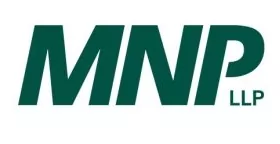The IASB has recently published amendments to IFRS 11, addressing Accounting for Acquisitions of Interests in Joint Operations, effective for annual periods beginning on or after January 1, 2016.
The amendments address apparent inconsistencies in practice in acquiring for such interests. Up to this point, some issuers have been accounting for the transactions by applying IFRS 3 to the extent it's applicable, measuring identifiable assets and liabilities acquired at their fair values and recognizing any excess purchase price as goodwill, while expensing transaction costs as for business combinations. Others followed a "cost approach" of allocating the total cost of acquiring the interest in the joint operation, including transaction costs, to identifiable assets on the basis of relative fair values, without recognizing goodwill. Others may have followed a hybrid of these two approaches.
The amendments clear up this inconsistency by specifying the following:
- When an entity acquires an interest in a joint operation in which the activity of the joint operation constitutes a business, as defined in IFRS 3, it shall apply, to the extent of its share in accordance with paragraph 20, all of the principles on business combinations accounting in IFRS 3, and other IFRSs, that do not conflict with the guidance in this IFRS and disclose the information that is required in those IFRSs in relation to business combinations. This applies to the acquisition of both the initial interest and additional interests in a joint operation in which the activity of the joint operation constitutes a business.
The amendments also address situations in which a joint operator increases its interest in an already-held joint operation with activities constituting a business, specifying that in cases where the joint operator continues to have joint control both before and after the transaction, then it doesn't remeasure its previously held interests.
The IASB's rationale for all this is fairly concise, saying simply it considers that separately recognizing goodwill, when present, is preferable to allocating premiums to identifiable assets acquired on the basis of relative fair values; it thinks that an approach limiting the application of business combinations accounting only to issues that aren't addressed elsewhere in IFRS lacks a strong conceptual basis; and that the guidance in IFRS 3 and other IFRSs on business combinations give a comprehensive and consistent set of accounting principles for the different components of such complex transactions as acquisitions of interests in businesses. This all seems uncontroversial enough, even if it's hard to imagine that the perceived inconsistencies between entities in this area were a great impediment to anyone's decision-making.
Know-how example
The amendments add a couple of new illustrative examples to IFRS 11. One of these addresses a situation in which a Company C becomes a joint operator in a pre-existing joint operation between Companies A and B, bringing along its "know-how" in an aspect of operations crucial to the operation's success. The example sets the scene as follows:
- "In exchange for its share in Joint Operation Z, Company C pays cash to Companies A and B and grants the right to use its know-how in processing Material M for the purposes of Joint Operation Z. In addition, Company C seconds some of its employees who are experienced in processing Material M to Joint Operation Z. However, Company C does not transfer control of the know-how to Companies A and B or Joint Operation Z because it retains all the rights to it. In particular, Company C is entitled to withdraw the right to use its know-how in processing Material M and to withdraw its seconded employees without any restrictions or compensation to Companies A and B or Joint Operation Z if it ceases its participation in Joint Operation Z.
The "know-how" has a carrying value of CU300 in Company C's financial statements, compared to its fair value of CU1000. On acquiring its interest in the joint operation, Company C recognizes its share of the operation's assets and liabilities and applies other principles applying to business combinations, with the cash it paid in return for its interest constituting the cost of the purchase. However, the example goes on to emphasize that Company C continues to separately recognize the know-how in processing Material M because it retains all the rights to it: "As a consequence of retaining control of the right to use the know-how that it granted to the joint operation, Company C has granted the right to use the know-how to itself. Consequently, Company C does not remeasure the know-how, and it does not recognize a gain or loss on the grant of the right to use it."
This really makes a broader point about assessing the entirety of the legal rights and obligations attaching to each aspect of an entity's involvement with a joint operation, a point that applies on an ongoing basis as much as it does at the outset. Maybe for some issuers this aspect of the amendments is as significant as their headline purpose.
The content of this article is intended to provide a general guide to the subject matter. Specialist advice should be sought about your specific circumstances.

